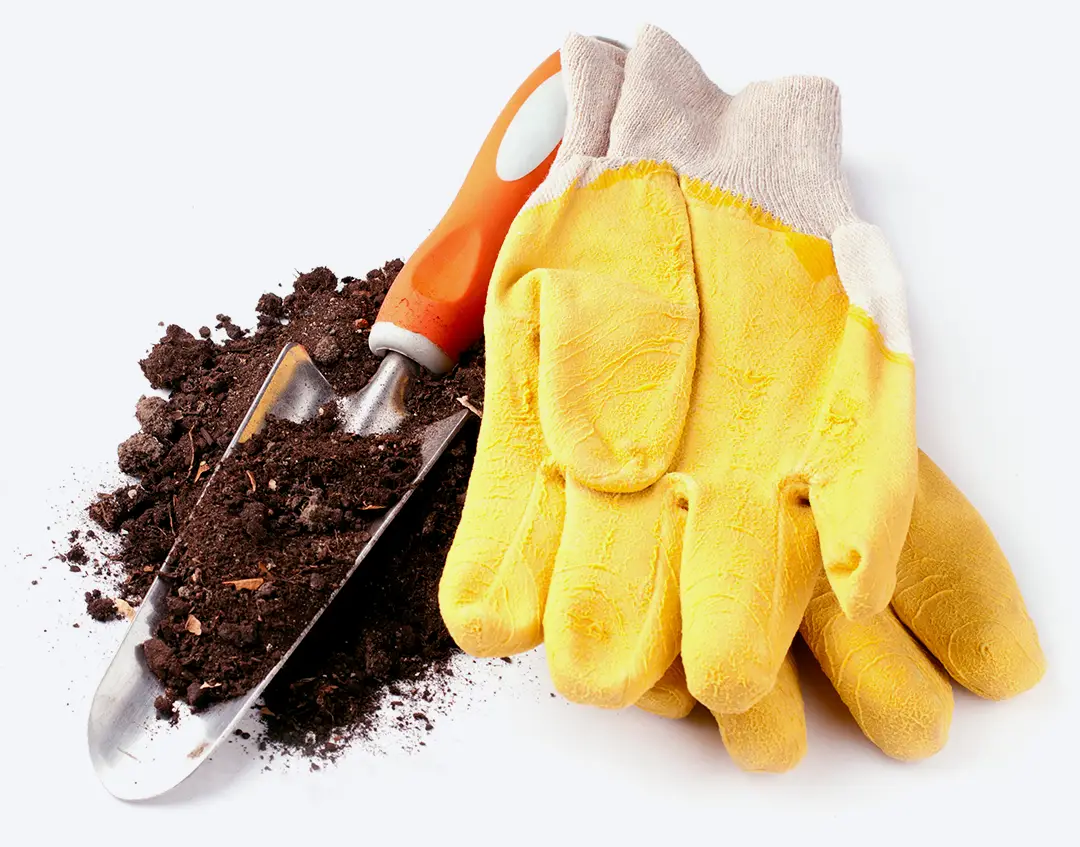Fresh, healthy, local!
We offer an extensive line of popular vegetable and herb varieties. Most of our transplants are available in biodegradable pots that can be planted in the garden and will decompose.
Vegetables
Herbs
Rosemary

Features
Perennial herb in warmer climates. Rosemary has small, extremely aromatic and flavourful leaves that have a distinctive pungent flavour. It produces blue-green needle-like foliage, and small, blue, delicate flowers.
Light
Plant in full sun.
Soil & Water
Well drained, even sandy, more dry than moist. Soak when soil dries.
Spacing
Space .6-1m (2-3') apart.
Height
Grows .6-2m (2-6') in height.
Garden Use
Best in containers. Can also be used in herb and flower gardens.
Growing Tips
Requires adequate air circulation. Benefits from cactus soil and perlite. Be sure to plant well after last frost. Feed with slow release fertilizer at time of planting and again in early summer. Very cold tolerant.
Culinary Use
Used in Mediterranean dishes, barbecue dishes, stews, vegetables, sauces, marinades and bread. The leaves and the flowers are edible. Rosemary is fragrant and has a delicious taste. Rich in iron, calcium, and vitamin B.
Rubin Basil

Features
Prized for its dark red, leafy stems and pretty pink blooms. This great herb basil has a stronger, spicier flavour than sweet basil and reddish-purple leaves, creating a unique look in salads.
Light
Full sun.
Soil & Water
Well drained, rich soil. Water as needed all season to keep soil evenly moist, keeping your eye out for the first sign of wilt. Wilting is a sure sign that your basil needs water.
Spacing
Space 45cm (18") apart.
Height
Grows 60-75cm (24-30") in height.
Garden Use
Containers, borders, herb and flower beds.
Growing Tips
Feed with a vegetable fertilizer to ensure your bountiful harvest. To dry, wait until the flowers begin to open, then cut clusters off and hang them upside down turning periodically until dry.
Culinary Use
The flavour of this variety of basil is quite intense, use it sparingly in salads and do not choose this particular variety when a large quantity of basil is needed, such as for making pesto. It is perfect to add to a salad for a splash of color and a burst of flavour. Use dried or fresh.
Lavender

Features
Ornamental herb with aromatic qualities. Used for cosmetics and perfumes. Flowers are borne in whorls. This fragrant plant has gray-green foliage with blue-violet blooms. Durable and drought-resistant.
Light
Plant in full sun.
Soil & Water
Prefers well drained but still moist. Water as needed.
Spacing
Space 45cm (18") apart.
Height
Grows 50-60cm (20-24") in height.
Garden Use
Containers, herb and flower beds.
Growing Tips
Avoid planting in soggy areas. Thrives in hot humid climate. Benefits from organic materials such as compost. Avoid soils with high PH balance.
Culinary Use
Produces honey. Flowers are typically candied as cake decorations. Used in baked goods, desserts and French cuisine. Sometimes paired with sheep and goat-milk cheeses. Also used for aroma sachets and potpourri. Lavender gives off a beautiful scent.
Lemon Balm

Features
Perennial herb in the mint family. Has a slight lemon scent and flavour. Blooms small white flowers in late summer.
Light
Plant in part shade.
Soil & Water
Sandy, well drained soil with low acidity level. Water as needed.
Spacing
Space 45cm (18") apart.
Height
Grows 60-90cm (24-36") in height.
Garden Use
Containers, herb and flower beds.
Growing Tips
Requires consistently moist soil. Water regularly.
Culinary Use
Used for flavor in ice cream and herbal teas. Use dried leaves for seasoning.
Mint

Features
Very easy to grow, and will spread readily. The leaves may be a dark green to purple color, often streaked with darker color. Chocolate mint has a strong minty aroma which has a faint hint of chocolate.
Light
Plant in full sun.
Soil & Water
Best in fertile, humus-rich well drained soil. Water as needed.
Spacing
Space 60cm (24") apart.
Height
Grows 60cm (24") in height.
Garden Use
Best in containers, as it spreads quickly. Can be used as an herb ground cover.
Growing Tips
Pinch back to keep the plant growing evenly.
Culinary Use
Use chocolate mint in desserts; it can be added to sorbets and cakes. Dried leaves can be used for tea.
Oregano
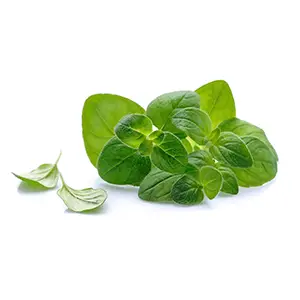
Features
Aromatic perennial herb with oval, dark green when fresh, light green when dried. The herb is stronger dried than fresh. Small white flowers.
Light
Plant in full sun to part shade.
Soil & Water
Average, well drained, sandy. Keep soil evenly moist.
Spacing
Space 45cm (18") apart.
Height
Grows 60cm (24") in height.
Garden Use
Containers, herb and flower beds.
Growing Tips
Cut it back several times during the growing season to harvest the leaves from the stems.
Culinary Use
Used in Greek and Italian dishes, sauces, pizza, egg dishes, breads and marinades. Soups and salads. Also compliments beef and lamb stews.
Cilantro

Features
An annual or biennial herb. Stemmy, aromatic and flavorful leaves. The seeds are called coriander and have a citrus flavor.
Light
Plant in full sun.
Soil & Water
Prefers fertile, well drained but still moist. Keep soil evenly moist.
Spacing
Space 30-45cm (12-18") apart.
Height
Grows 60cm (24") in height.
Garden Use
Containers, herb and flower beds.
Growing Tips
Avoid planting in summer as intense heat causes plant to bolt to seed quickly. Extremely cold hardy.
Culinary Use
Used in sauces, salsa, marinades, Latin-American and Asian cuisine. Use fresh, dried leaves tend to loose their flavour.
Catnip

Features
Member of the mint family. Light green in color with a slightly furry texture with scalloped edges on leaves. Small lavender flowers. Scentless to humans but known for its behavioural effects on cats.
Light
Plant in part shade.
Soil & Water
Well drained but keep soil evenly moist.
Spacing
Space 30-45cm (12-18") apart.
Height
Grows 45-90cm (18-36") in height.
Garden Use
Containers, borders, herb and flower beds.
Growing Tips
Expose young plants to full sun once sprouted. Do not allow them to dry out.
Culinary Use
Used in some teas.
Chamomile

Features
Light green, smooth, multi-branched stems and finely divided, feathery leaves. Flowers are daisy-like, small with a yellow, solitary, central disk and white ray flowers along the edge.
Maturity
30 to 60 days.
Light
Full sun but tolerant to moderate shade.
Soil & Water
Well drained, light soil. Water on regular basis, taking care not to over water.
Spacing
Space 30-45cm (12-18") apart.
Height
Grows 15-30cm (6-12") in height.
Garden Use
Not recommended for container gardening. Use in gardens and flower beds. Growing to a height of 60cm (24”) or more, it is a good choice for borders and along walkways.
Growing Tips
Chamomile is known to attract bees, butterflies or birds and has fragrant blossoms. Prefers cool weather, sow in early spring and again in late summer.
Culinary Use
Used to make chamomile tea, and used in medicinal treatments.
Chives

Features
Large, thick-leafed variety that’s better for freezing or drying than regular chives. Mild flavour.
Light
Plant in full sun.
Soil & Water
Well drained, nutrient rich soil. Keep soil evenly moist.
Spacing
Space 20-30cm (8"-12") apart.
Height
Grows 30cm (12") in height.
Garden Use
Containers, herb and flower beds.
Growing Tips
Chives thrive in any fast-draining garden loam. Amend soil for growing chives with 2” of good garden compost or composted manure, and improve drainage in clay soils by adding coarse sand, perlite, or fine gravel or lava rock.
Culinary Use
Snip leaves and chop finely to add to soups, salad dressings, scrambled eggs, and pasta dishes. Chop and add to softened butter to put on baked potatoes.
Dill

Features
Dwarf dill with ornamental dark green ferny leaves and bright yellow-green flowers. An improved variety of dill, which is more compact. The big flower heads of dill are one of the best nectar sources for beneficial insects in the garden.
Light
Plant in full sun.
Soil & Water
Rich, well-drained soil. Water as needed.
Spacing
Space 30cm (12") apart.
Height
Grows 45-60cm (18-24") in height.
Garden Use
Containers, herb and flower beds.
Growing Tips
Continues to be a favourite for its garden performance and the fact that it offers a lot of foliage. It is also slower to set seed than ordinary dill varieties, which means that you can harvest foliage longer.
Culinary Use
As the flowers appear, you can harvest the dill seed for making dill pickles or other dishes calling for dill seed. Dill leaves or seeds are used in the cooking of many cultures around the world.
Lemon Grass

Features
This herb has aromatic grass-like leaves. Produces light gray-green leaves with a lemony scent and flavour. Wispy, white flower heads are an added bonus.
Light
Plant in full sun.
Soil & Water
Prefers moist and nutrient rich soil. Water as needed.
Spacing
Space 60-90cm (24"-36") apart.
Height
Grows 60-90cm (24-36") in height.
Garden Use
Containers, herb and flower beds.
Growing Tips
Plant after last frost in spring or in fall. Perennial in zones 8 to 11. Plant where the scent can be enjoyed.
Culinary Use
Use leaves and stems in Asian dishes. Fresh leaves lend a lemony taste to foods. Flavour intensifies the longer you cook it. Use lemon grass fresh, dry it, or freeze it.
Parsley

Features
Biennial herb with tightly coiled bright green leaves. Crispy texture and fresh taste.
Light
Plant in part shade.
Soil & Water
Prefers well drained, loamy soil, rich in nitrogen. Keeps soil evenly moist.
Spacing
Space 30cm (12") apart.
Height
Grows 60cm (24") in height.
Garden Use
Containers, borders, herb and flower beds.
Growing Tips
Do not cover seeds as exposure to light is necessary for germination. Sow thinly and grow on the dry side.
Culinary Use
Used as a garnish. Key ingredient in tabbouleh. Typically used in salads and French cuisine. High source of iron.
Peppermint

Features
A hybrid mint with tall smooth stems, square in cross section. Dark green, aromatic leaves with reddish veins with attractive lilac pink blooms. Leaves and stems are typically slightly hairy.
Light
Full sun, will tolerate some shade.
Soil & Water
Well drained, moist but not wet. Water as needed.
Spacing
Space 30-60cm (12-24") apart.
Height
Grows 30-60cm (12-24") in height.
Garden Use
Best in containers to prevent spreading but can be used in herb and flower beds.
Growing Tips
Mint is an aggressive plant, sending runners above and just under the ground. Being a hybrid, it is ususally sterile, producing no seeds.
Culinary Use
Typically used as a garnish. Often used for flavouring vinegars or jellies used with meat such as lamb. Also used in teas and desserts.
Sage

Features
Small perennial evergreen subshrub in mint family. Has woody stems and visually interesting patterned gray leaves with attractive blue-lavender flowers blooming in summer.
Light
Plant in full sun.
Soil & Water
Light, well drained alkaline soil. Tolerant to dry soil. Keep soil evenly moist.
Spacing
Space 60cm (24") apart, sage likes room to grow.
Height
Grows 30-90cm (12-36") in height.
Garden Use
Best in containers. Suitable for herb and flower beds.
Growing Tips
Sage can become woody as it matures. Replace in the garden every 2 years.
Culinary Use
Known for its peppery flavour. Used in marinades for fatty meats, cheeses. Also used as flavouring in beverages, sauces, soups, and sausage. Generally more flavourful fresh than dried. Try sage tea.
Spearmint
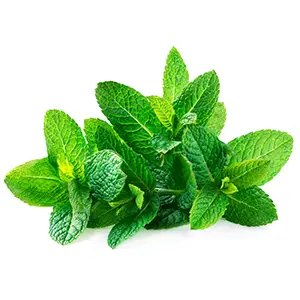
Features
Fast growing and widespread herb with either hairy or hairless stems and foliage. Known for its pointed leaf tips. Savoury spearmint flavour.
Light
Plant in partial shade.
Soil & Water
Moist, rich well-drained soil. Keep soil evenly moist.
Spacing
Space 45cm (18") apart.
Height
Grows 60cm (24") in height.
Garden Use
Spreading plant is best in containers.
Growing Tips
Tolerates light frost. Keep plants in check by harvesting the tips regularly and weeding out unwanted stems.
Culinary Use
Used for hot and cold beverages such as tea, mojito and lemondade. Also used in soups, salads, as well as compliments to meat dishes. Better used fresh.
Stevia

Features
Called sweet leaf for the very sweet taste of its leaves. Leaves are 20-30 times sweeter than sugar cane. An herb member of the chrysanthemum family that is native to parts of Brazil, where it grows wild as a small shrub.
Light
Plant in full sun.
Soil & Water
Moist, rich well-drained soil. Keep soil evenly moist.
Spacing
Space 45cm (18") apart.
Height
Grows 30cm (12") in height.
Garden Use
Containers, herb and flower beds.
Growing Tips
Wait until after all danger of frost is passed before planting.
Culinary Use
Use the fresh leaves during the growing season to sweeten tea. The sweetness in the leaves is approximately one-fourth as concentrated as the white, powdered stevia that you buy. When sweetening with powdered leaves, use about 1/8 teaspoon of dried stevia to equal the sweetness of 1 teaspoon of sugar.
Tarragon

Features
Strongly aromatic and flavourful, dark-green leaves, small white flowers. Anise flavoured leaves.
Light
Plant in partial shade.
Soil & Water
Well drained, nutrient rich soil, on the dry side. Allow soil to dry between waterings.
Spacing
Space 30-40cm (12-15") apart.
Height
Grows 60-90cm (24-36") in height.
Garden Use
Herb garden or other sunny bed; planted more for flavour than aesthetic use.
Growing Tips
French tarragon spreads to make a mass of stems and works well in containers where it will not trail, but spill over the edge of a pot. Also likes the drainage pots provide. Containers help keep the foliage dry, too, which really helps in humid climates. Cold hardy to zone 4.
Culinary Use
A traditional seasoning with eggs, poultry, salads, cheese, and fish.
Thyme

Features
Aromatic low growing herb that can sometimes become woody. Typically grows as a sub-shrub. Blooms white-yellow flowers.
Light
Plant in full sun.
Soil & Water
Well drained, rich soil. Keep soil evenly moist.
Spacing
Space 30cm (12") apart.
Height
Grows 30-40cm (12-15") in height.
Garden Use
Containers, borders, herb and flower beds.
Growing Tips
Avoid soggy soil as it will rot the plant. Avoid over-nursing as it will make the plant less hardy.
Culinary Use
When in doubt, use thyme. Used in eggs, cheeses, sauces, stews, stuffings, meats and poultry. Also used in soups and salads.
Tomato

Varieties
Beefsteak Red, Better Boy, Biltmore, Brandywine, Celebrity, Early Girl, Fantastico, Husky Cherry Red, La Roma, Lemon Boy, Rutgers, San Marzano, Super Sweet 100, Sweet Million, Tidy Treat, Yellow Pear
Maturity
Refer to plant care tag for details.
Light
Plant in full sun.
Soil & Water
Well drained, moist soil. A time release fertilizer is recommended with a pH of 5.5 to 7. Water as needed.
Spacing
Refer to plant care tag for details.
Height
Refer to plant care tag for details.
Garden Use
Vegetable garden or raised garden beds.
Growing Tips
Planting depth: bury 2/3 of the plant. Plant tomatoes after threats of frost have passed. Plant your tomatoes quite deep into the ground. The deeper you root your plants, the stronger they will be as they grow. Tomatoes thrive best when they are grown around chives, onions, parsley, marigolds, nasturtiums, carrots or garlic. Avoid planting tomato plants by cabbages and the potato family.
Culinary Use
Sandwiches, especially when you need a thick, juicy slice. Also can be used for cooking or freezing.
Peppers

Varieties
Baron Red Bell, Cajun Bell, Cal Wonder, Carmen, Cayenne, El Jefe, Flavorburst, Habanero, Hungarian Hot, Hungarian Sweet, Orange Blaze, Super Shepherd
Maturity
Refer to plant care tag for details.
Light
Plant in full sun.
Soil & Water
Well drained. Prepare your soil with compost, manure and a fertilizer with a pH of 5.6 to 7.5. Well drained soil is very important. Avoid planting in compact soil. Water as needed.
Spacing
Refer to plant care tag for details.
Height
Refer to plant care tag for details.
Garden Use
Vegetable gardens or raised beds.
Growing Tips
Plants thrive in weather temperatures of 60F (15C) and higher. Be careful of frost in the morning and evening. Cover your plants accordingly. Average water needs, water regularly but do not overwater. Mulching in raised beds and floating row covers can be an advantage to help young plants stay warm in the early spring where the weather is cool. Mulching also helps control the weeds. Make sure your watering is consistent. If watering pattern is irregular, it can harm and affect the plant’s ability to harbour fruit.
Culinary Use
Baron is excellent for eating fresh, roasting, stuffing and grilling.
Beets

Features
Heirloom variety with bright burgundy foliage and tender, round roots.
Maturity
Refer to plant care tag for details.
Light
Plant in full sun.
Soil & Water
As a root crop, beets thrive in rich, well-worked loam, fed with compost, deeply dug or tilled.
Spacing
Refer to plant care tag for details.
Height
Refer to plant care tag for details.
Garden Use
Vegetable gardens, raised garden beds.
Growing Tips
Avoid any risk of frost. Fertilize regularly for best results. Water as needed.
Culinary Use
An excellent addition to salads, pickled beets or cooked vegetables.
Broccoli

Features
Compact plant produces flavourful dark green heads on solid stems. Used primarily for extra early crown cuts in late spring or early summer. Uniform, medium green, deep domed heads with small, tight beads. Offers good heat tolerance as well as cold vigor.
Maturity
Refer to plant care tag for details.
Light
Plant in full sun.
Soil & Water
It is important to have soil rich in organic matter. Grows best with a pH of 6.0 to 7.0, the pH level helps prevent club root disease.
Spacing
Refer to plant care tag for details.
Height
Refer to plant care tag for details.
Garden Use
Vegetable gardens and raised garden beds.
Growing Tips
Broccoli grows best in cooler temperatures, between 18 to 26 degrees celsius. Avoid pest problems by keeping your garden clean.
Culinary Use
Rich in vitamins. Use in soups, salads, side dishes, quiche, stir fry and as a garnish. Great snack with dip.
Brussel Sprouts

Features
Brussels sprouts are a favourite cool season crop. The green sprouts, or ‘mini-cabbages,’ grow along the thick stem.
Maturity
Refer to plant care tag for details.
Light
Plant in full sun.
Soil & Water
Provide well-drained, nutrient-rich soil that’s high in organic matter.
Spacing
Refer to plant care tag for details.
Height
Refer to plant care tag for details.
Garden Use
Vegetable gardens and raised garden beds.
Growing Tips
Fertilize regularly for best results. Keep soil consistently moist throughout the growing season. Typically, established Brussels sprouts need 1-1.5" (2.5-4cm) of water per week, whether supplied through rainfall or irrigation.
Culinary Use
Cooked vegetable. Like its relatives cabbage and broccoli, brussels sprouts are filled with phytonutrients that help the body's natural defense systems protect us against disease. One-half cup of cooked sprouts contains a huge amount of Vitamin A and beta-carotene, both of which play important roles in defending the body against infection and promoting good skin.
Cabbage
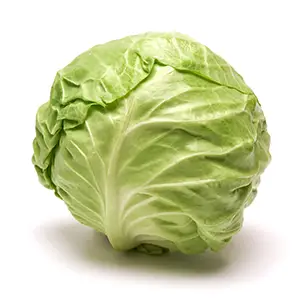
Features
This variety of cabbage yields beautiful red heads of cabbage. The cabbages bring a flavourful and crisp taste to the kitchen. The cabbages are very solid and can withstand cold weather, making it a good variety to grow.
Maturity
Refer to plant care tag for details.
Light
Plant in full sun.
Soil & Water
Prefers nutrient rich, moist but not wet.
Spacing
Refer to plant care tag for details.
Height
Refer to plant care tag for details.
Garden Use
Vegetable garden beds, raised beds. Can be used to add a beautiful ornamental border to gardens.
Growing Tips
Easy to grow and is low maintenance. Keep the plant consistently moist. Good frost tolerance.
Culinary Use
The red cabbage brings a beautiful color addition and accent flavours in salads and slaws. Excellent source of vitamins and minerals.
Kale

Features
A frost resistant selection with dark green, crumpled leaves. Dependable color and texture looks great all season.
Maturity
Refer to plant care tag for details.
Light
Plant in full sun.
Soil & Water
Prefers loamy, fertile, well drained soil and cooler temperatures. It will do best in soil with a pH between 5.5 to 6.8.
Spacing
Refer to plant care tag for details.
Height
Refer to plant care tag for details.
Garden Use
In vegetable garden or raised beds.
Growing Tips
Wait until last frost for planting. Add mulch during fall season to reduce weed growth. Harvest as needed. High yielding, cold tolerant. Keep your plants well watered.
Culinary Use
Kale is packed with powerful phytonutrients, minerals and fiber. Excellent raw in salads and used cooked, steamed or boiled, in many dishes and recipes.
Squash
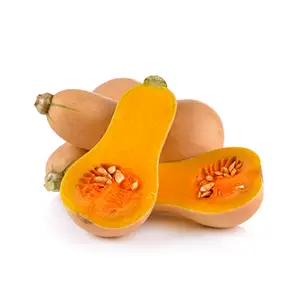
Features
A nothern New England favourite. Produces approximately 3 to 4 fruits per plant.
Maturity
Refer to plant care tag for details.
Light
Plant in full sun.
Soil & Water
Well drained soil, mix a 3" (7cm) layer of compost with timed release organic matter and a pH of 5.6 to 7.5. Water as needed.
Spacing
Refer to plant care tag for details.
Height
Refer to plant care tag for details.
Garden Use
Vegetable gardens or raised beds.
Growing Tips
Insects and vine borers can be a problem. Use the appropriate insecticides recommended by your garden centre. Large bugs and eggs can be picked by hand.
Culinary Use
Used in soups, baking, pies or sides.
Strawberries

Features
A Heirloom variety, this French type strawberry has smaller berries and a distinct flavour and aroma. Neat, bushy runnerless plants bear delicious red berries. Grow as an annual or perennial.
Maturity
Refer to plant care tag for details.
Light
Plant in full sun.
Soil & Water
Best in rich, moist, well-drained soil containing plenty of organic matter. Water frequently until plants are growing vigorously. Watering is very important in early summer and September.
Spacing
Refer to plant care tag for details.
Height
Refer to plant care tag for details.
Garden Use
Vegetable gardens or raised beds. Excellent edging, border or container variety.
Growing Tips
Apply a light mulch to keep weeds down, conserve moisture and keep fruit clean. Fertilize beds in early summer and again in September with a balanced fertilizer. Do not fertilize if plants are flowering. Note that June-bearing plants produce the second year after planting. Cut all runners off during the first year, leave 2-3 runners the second year.
Culinary Use
Used in deserts, fresh or for jam.
Cauliflower

Features
This variety is a classic cauliflower with hearty flavour and dense, crisp fine texture that gardeners and gourmets love. Big, vigorous, uniform plants produce brilliant white, deeply domed heads. Terrific holding ability.
Maturity
Refer to plant care tag for details.
Light
Plant in full sun.
Soil & Water
Needs a very nutrient rich soil with lots of organic matter, the pH soil should be around 6.5 to 6.8 to maximize growth and deter clubroot.
Spacing
Refer to plant care tag for details.
Height
Refer to plant care tag for details.
Garden Use
Vegetable garden beds, raised beds.
Growing Tips
Wrapping leaves provide shielding from sun and cold, allowing gardeners north and south to grow this Amazing variety. Tolerant to both heat and cold stress.
Culinary Use
Salads, soups, side dishes. Also very good raw with dips.
Cucumbers

Features
A pickling cucumber with crisp, sweet flavour and excellent heat tolerance. High yielding plant.
Maturity
Refer to plant care tag for details.
Light
Plant in full sun.
Soil & Water
Well drained, moist soil. A soil pH between 6.1 to 6.5 is recommended.
Spacing
Refer to plant care tag for details.
Height
Refer to plant care tag for details.
Garden Use
Plant in containers, vegetable gardens or raised beds.
Growing Tips
Plant in hills.
Culinary Use
Delicious eaten fresh, in salads or pickled.
Eggplant

Features
Tender, tasty, puplish-black fruit. Highly nutritional. Setting the standard for large eggplants, this plant yields about 4 to 6 fruits – however yields more if you keep harvesting. The eggplant turns into a dark black-purple color when its ready to be picked. Very easy to grow.
Maturity
Refer to plant care tag for details.
Light
Plant in full sun.
Soil & Water
It is recommended that the soil is enriched with composted manure and time released nutrients. Well drained soil is best.
Spacing
Refer to plant care tag for details.
Height
Refer to plant care tag for details.
Garden Use
Plant in vegetable garden or raised beds.
Growing Tips
Keeping the plant well watered will sweeten the fruit and prevent the fruit from being bitter.
Culinary Use
Excellent breaded, fried, stuffed. Can be put on skewers for grilling.
Beans

Features
String beans or bush beans are second only to tomatoes in many vegetable lovers' eyes. They may very well be the easiest and fastest vegetable to grow, which is why they are a perfect crop for the new gardener. The reason they are ready to pick so quickly is because they are eaten before the bean itself is mature. Both the pod and bean seed should be tender when picked. This is in contrast with shell beans in which the seeds must be completely developed before picking.
Maturity
Refer to plant care tag for details.
Light
Plant in full sun.
Soil & Water
These beans prefer a soil that is a bit on the sandy side, which gives them good drainage. If you have a clay-based soil, mix in compost. Compost can be purchased at your local nursery or garden center.
Spacing
Refer to plant care tag for details.
Height
Refer to plant care tag for details.
Garden Use
Vegetable gardens, raised garden beds.
Growing Tips
This variety is easy to grow, has good flavour and high yield. Water regularly as the root system is shallow. Plant a new row of string beans every 10 days to two weeks to create a longer harvest, until it gets too hot. The vines grow upright, no staking is required.
Culinary Use
Green beans are often steamed, boiled, stir-fried or baked in casseroles. Green beans can be frozen, dried or canned.
Bok Choy
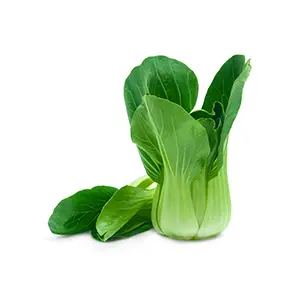
Features
Biennial Chinese cabbage grown as an annual, in the same species family as turnips. Leaves are dark green with pale colored stalks.
Maturity
Refer to plant care tag for details.
Light
Plant in full sun.
Soil & Water
Prefers well drained soil.
Spacing
Refer to plant care tag for details.
Height
Refer to plant care tag for details.
Garden Use
Herb and vegetable gardens. Flower beds.
Growing Tips
Wait until last frost for planting. Add mulch during fall season to prevent bolting. Harvest as needed.
Culinary Use
Crisp and tender leaves for salads and Oriental dishes. A mild tasting variety, typically used soups, salads and stir-fries. Stalks can be eaten or cooked like celery. Most bok choy can be harvested at different stages. Young leaves are can be used raw in salads. Whole heads of baby bok choy can be braised in butter and/or broth or gently stir-fried.
Cantaloupe
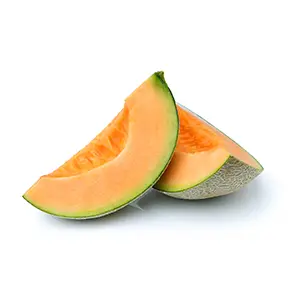
Features
Since the 1920s, this has been a classical favourite with a ribbed, hardy skin which is sometimes referred to as a muskmelon. Known for it's delicious flavour and large size. A large, oval, ribbed cantaloupe with heavy, golden netting. Ribbed netting becomes a golden hue as oval shaped melons mature. Deep orange flesh is very thick with a very tasty sweetness which improves in flavor after picking.
Maturity
Refer to plant care tag for details.
Light
Plant in full sun.
Soil & Water
Very well drained, warm soil at least 70 degrees F (21 degrees C). They need constant feeding which includes compost and rotten manure.
Spacing
Refer to plant care tag for details.
Height
Refer to plant care tag for details.
Garden Use
Vegetable garden beds, raised beds.
Growing Tips
You can save space by planting the plant about a foot apart on a trellis that will allow the plant to climb. Plant to the depth of the container.
Culinary Use
Fruit salads, desserts, jams and sauces. Also enjoyed on its own.
Corn

Features
One of the finest super sweet corns you will ever grow! Retains its flavour and tenderness up to 2 weeks longer than other varieties.
Maturity
Refer to plant care tag for details.
Light
Plant in full sun.
Soil & Water
Well drained soil, work in aged manure or compost the fall before planting and let over-winter in the soil. Water as needed.
Spacing
Refer to plant care tag for details.
Height
Refer to plant care tag for details.
Garden Use
Vegetable garden beds, raised beds.
Growing Tips
Plant to the depth of the container.
Culinary Use
Pair it with protein-rich veggies and legumes to round out a protein-packed plant-based dish.
Edamame
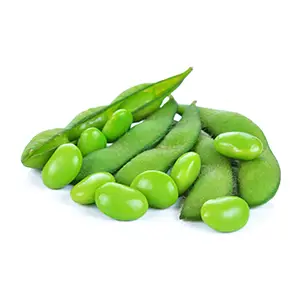
Features
You will be growing a nutritional powerhouse when you plant edamame in your garden. Easy to grow. Also referred to as "green vegetable soybeans".
Maturity
Refer to plant care tag for details.
Light
Plant in full sun.
Soil & Water
Edamame does well in many different soil types. It does best in well drained soil. Work in some mature compost.
Spacing
Refer to plant care tag for details.
Height
Refer to plant care tag for details.
Garden Use
Plant in vegetable garden or raised beds.
Growing Tips
Feed regularly.
Culinary Use
Tasty cooked vegetable or use in salads or eat as a snack. Boil fresh in the pod at green stage. After boiling remove beans from pod to eat. Or leave to mature and use as a dry, bright green bean. Exceptional quality and yields.
Lettuce
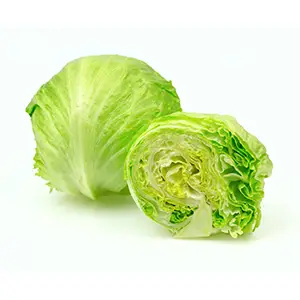
Features
This is a classical, popular crispy and sweet variety of lettuce that forms a solid head with a nice crunchy texture. The outside leaf is a medium green and crinkled. Cool weather helps the lettuce mature.
Maturity
Refer to plant care tag for details.
Light
Plant in full sun.
Soil & Water
Well drained, nutrient rich soil. Prefers well watered soil with lots of organic matter and a pH of 6.0 to 7.0.
Spacing
Refer to plant care tag for details.
Height
Refer to plant care tag for details.
Garden Use
In vegetable garden or raised beds.
Growing Tips
Prefers well drained location and sunny position to prevent disease. Water at soil level instead of overhead. Cold tolerant.
Culinary Use
Perfect for salads, garnish.
Melon

Features
This early maturing melon grows on a hardy vine with a high yield of super sweet and tasty fruit. This particular variety of honeydew is great for short growing seasons. The melons have a smooth and creamy colored skin with a sweet rind.
Maturity
Refer to plant care tag for details.
Light
Plant in full sun.
Soil & Water
Well drained soil with lots of compost, well rotted manure to ensure drainage and fertility. A pH of 6.0 to 7.0 is recommended.
Spacing
Refer to plant care tag for details.
Height
Refer to plant care tag for details.
Garden Use
In vegetable garden or raised beds.
Growing Tips
Choose a place that has full sun and good air circulation. Plant to the depth of the container.
Culinary Use
On its own, desserts, fruit salads.
Onions

Features
Big, full season red onion. Beautiful red onions that will make you think you’ve climbed the stairway to heaven. When started as a transplant will make large onions with dark red skin.
Maturity
Refer to plant care tag for details.
Light
Plant in full sun.
Soil & Water
Prefers soil with good drainage, and they grow best when the soil pH ranges between 6.0 and 6.8. Raised beds or raised rows called furrows made by mounding up soil are ideal, especially if your soil is heavy clay. Onions roots are shallow and not very efficient at taking up moisture, so they need a steady supply of water to grow without interruption. Although they actually recover well from drought and start growing again when watered, it is best to keep the soil consistently moist until the bulbs enlarge.
Spacing
Refer to plant care tag for details.
Height
Refer to plant care tag for details.
Garden Use
Vegetable gardens or raised beds or furrows.
Growing Tips
Easy to grow. Plants will appreciate a starter solution of liquid fertilizer after planting. Watch for tiny black onion thrips and aphids, which suck sap from onion leaves. These are hard to see because they hide down in the folds and neck of the leaves. Also weak plants that slowly wilt may be infested with onion root maggots, the larvae of a common fly.
Culinary Use
Delicious in salads, soups, garnish, sides.
Pumpkins

Features
Perfectly proportioned small pumpkins with smooth, deep orange skins and solid, dark green stems. Easy to grip handles.
Maturity
Refer to plant care tag for details.
Light
Plant in full sun.
Soil & Water
Pumpkins grow best in loose, well-worked, well-drained soil rich in organic matter, with a soil pH of 6.0 to 7.5. Add aged compost to planting beds in advance of sowing. Pumpkin plants tolerate short periods of hot, dry weather, but it's best to keep them well watered. Regular, even watering keeps vines and fruit growing without interruption.
Spacing
Refer to plant care tag for details.
Height
Refer to plant care tag for details.
Garden Use
Garden beds. Pumpkins require ample room for growing.
Growing Tips
Disease resistant. Cultivate or mulch to control weeds. For decorative use, pick pumpkins (with stem attached) when rinds are hard but before heavy frost.
Culinary Use
Cure pumpkins in direct sun at 75° to 80°F for 2 weeks; then store at 50° to 55°F, in a dry, well-ventilated place for 3 to 6 months. Do not refrigerate. Pumpkins in storage will shrink as much as 20 percent in weight but are still suitable for cooking. Pumpkin can be pureed and frozen for up to 6 months. Pumpkin also can be frozen or canned.
Rapini

Features
Same subspecies as turnip. This Italian non-heading broccoli is grown for its asparagus-like early spring shoots. It has many spiked leaves that surround a green bud. Blossoms small yellow flowers.
Maturity
Refer to plant care tag for details.
Light
Plant in full sun.
Soil & Water
Rich, well drained soil. Water as needed.
Spacing
Refer to plant care tag for details.
Height
Refer to plant care tag for details.
Garden Use
Containers, vegetable gardens and raised garden beds.
Growing Tips
A cool season crop. Plant during spring and fall seasons. Tolerant of cold weather and can withstand overwintering.
Culinary Use
Typically used in Italian, Chinese, Sicilian, and Portuguese dishes. Noted for its pungent, nutty, bitter taste. Delicious boiled or stir fried.
Snow Pea

Features
Cool weather plant that typically produces a high yield. Produces sweet tasting, long, thick pods that are light green in color. Blooms white and reddish-purple flowers.
Maturity
Refer to plant care tag for details.
Light
Full sun is best but will grow in partial shade.
Soil & Water
Well drained soil, more dry than wet.
Spacing
Refer to plant care tag for details.
Height
Refer to plant care tag for details.
Garden Use
Vegetable gardens or raised beds. Can be grown in containers.
Growing Tips
Plant in early spring and fall. Tolerant to cold weather and droughts.
Culinary Use
Consumed raw or cooked. Noted for its sweet taste and crispy texture. Also used in soups, salads and stir-fries.
Spinach

Features
A fine quality, heavy yielding variety with excellent flavour. Slow to bolt. This versatile spinach variety produces well over a lengthy growing season.
Maturity
Refer to plant care tag for details.
Light
Plant in full sun.
Soil & Water
Moist but well-drained, nutrient-rich soil. Keep soil evenly moist.
Spacing
Refer to plant care tag for details.
Height
Refer to plant care tag for details.
Garden Use
Vegetable gardens or raised beds.
Growing Tips
Keep soil consistently moist throughout the growing season. Evenly moist soil is the key to tender flavour. Mulch soil to reduce water evaporation and keep leaves clean from splashing soil.
Culinary Use
Use as cooked vegetable or in salads. Excellent flavour. High in nutrition.
Swiss Chard

Features
White and pink striped stems and glossy green leaves. Bountiful harvest.
Maturity
Refer to plant care tag for details.
Light
Plant in full sun.
Soil & Water
Prefers a pH of 6.5 to 6.8 to prevent club root disease. To avoid the bitter taste of Swiss chards, make sure the plant gets plenty of water.
Spacing
Refer to plant care tag for details.
Height
Refer to plant care tag for details.
Garden Use
Vegetable garden or raised garden beds. This plant can give the garden an exotic foliage feel wherever its planted.
Growing Tips
This plant is very forgiving and can be grown in the poorest quality of soil. Frost tolerant. Harvest young leaves for best flavour. Similar taste to spinach.
Culinary Use
Flavours a variety of dishes. Cook leaves like spinach or prepare leaf stalks like asparagus. High in nutrition.
Watermelon

Features
A pretty light green melon with dark stripes, it is popular and well known for its high sugar content and great juicy flavour. This fruit contains seeds that are small and dark. The vines are especially hardy, making them resistant to fusarium wilt and anthracnose.
Maturity
Refer to plant care tag for details.
Light
Plant in full sun.
Soil & Water
Prefers a well drained, nutrient rich soil with a pH of 6 to 6.8. Best with compost. Water as needed.
Spacing
Refer to plant care tag for details.
Height
Refer to plant care tag for details.
Garden Use
In vegetable garden or raised beds.
Growing Tips
Watermelons love to roam, so its important to leave enough room in the garden. Make sure you take care of the weeds. It can be a problem and travel through the vines and interrupt the growth of the vines. Soil is very important to watermelons, add organic matter to your soil. Use a high nitrogen fertilizer until the flowers develop, once the flowers form use a high phosphorous and potassium fertilizer help the watermelon grow.
Culinary Use
On its own, desserts, fruit salads.
Garden how-to
Tips for growing tomatoes
Sun-ripened tomatoes deliver delicious taste in every bite. Just a few healthy plants will produce buckets of fruit.

Garden how-to
Tips for growing peppers
From fruity sweet peppers in rainbow shades of yellow, orange, or red to habaneros hot enough to bring tears to your eyes, all peppers share a preference for a long, warm growing season.

Garden how-to
How to plant your Harvesthyme biodegradable pot
These pots allow for healthier plant roots and quick planting.

Garden how-to
The many benefits of mulching
Mulching is great for keeping your garden free of weeds and is effective and simple.

Garden how-to
Container gardening tips and ideas
Containers warm more quickly because of the sun shining on the pot, so we can start gardening sooner with faster results.

Garden how-to
Raised garden beds
Overcome your garden soil challenges by opting to plant raised beds for growing vegetables, herbs, and flowers.

Your plant hardiness zone map
This map can be used to help you select the best plants and vegetables and herbs for your garden, and to determine when to plant. It is simple to use, all you have to do is locate the zone where you live, and then choose the plants with your zone listing.
Most plants can grow successfully in a range of zones. Some plants, such as perennials, biennials, and bulbs, are more zone specific and should only be grown in the recommended zones. But annuals grow in almost any zone, providing they are given the correct amounts of water and sunlight, and the soil contains the proper nutrients.
The zones actually blend into each other, and within each zone there are microclimates that can be colder or milder than the surrounding area. Use the map only as a guide to selecting plants for your garden. When buying plants at your local garden center you may want to ask questions concerning specific plants in your geographical climate.

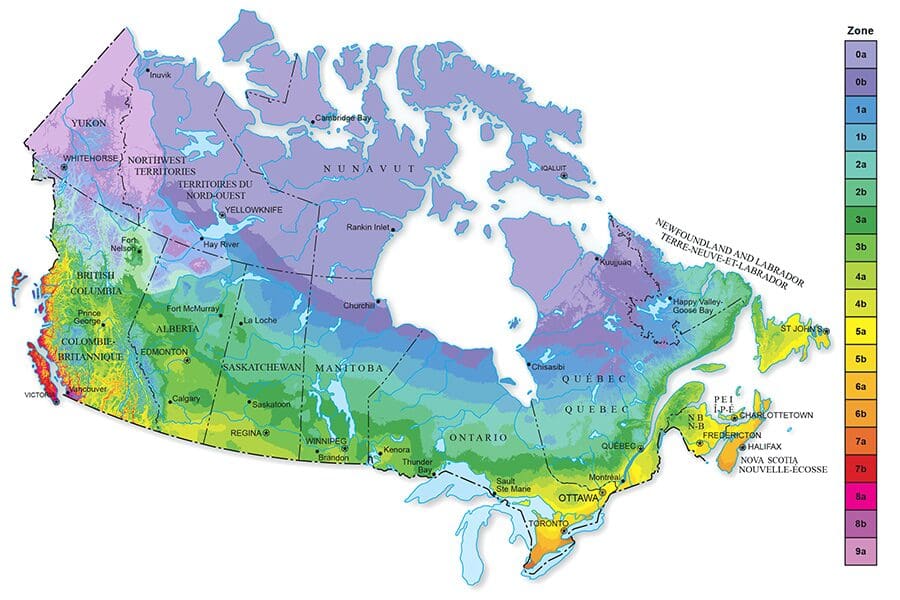
Where to Buy
Stores Near You
Read the latest from the Garden Club
Get fresh gardening tips and expert product knowledge from our team.
